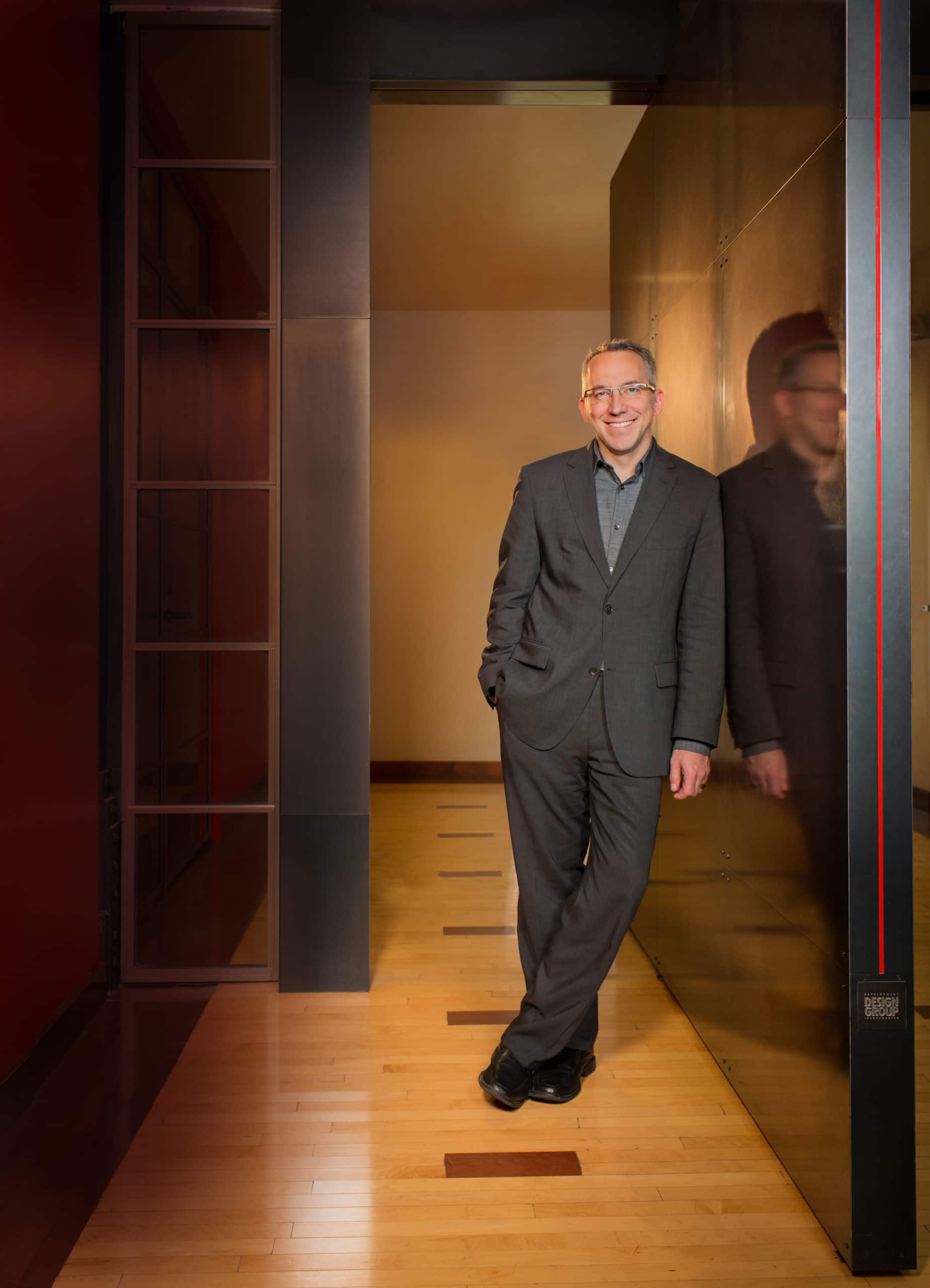As partner and director of sustainability at the Baltimore-based international design firm DDG (Design Development Group), Dustin Watson is an architect on a mission to weave the ethics of sustainability into his firm’s design work, but also into its culture and business practices. We recently spoke with him about his views on the big picture of sustainability and the term he has coined to describe DDG’s approach to design: “greenfill.”
gb&d: Beyond overseeing sustainability efforts in the company’s design work, do you have a similar role in your office’s internal operations?
Dustin Watson: I’ve been the green champion in the office, but I also try to figure out things we can do for our employees as a form of social sustainability. As an example, Baltimore, where our office is based, has some programs to help people live closer to where they work, and we’ve incentivized our employees to take advantage of that. With these initiatives, we hope to attract employees that are interested in making the world a better place. We also hope that reflects in the designs that they do.
gb&d: What steps are you taking to integrate sustainability into the company’s business plan?
Watson: You have to create the business case for sustainability and talk about how it’s going to help both the company and the client. For example, we’re about to move into a new space that’s smaller, an existing building that we’re rehabbing, and we are trying to ratchet down the energy use of the office as we move in there.
gb&d: Does DDG have a particular approach to sustainability?
Watson: We’re really a place-making company. We try to design places where people will want to visit and enjoy themselves, projects that truly become part of the fabric of the community. A lot of the work I do is very early in the design process. I develop strategies that aren’t really going to add significant costs to the project but [will] make them better than they might be if it was just a typical retail shopping center. Some of it has to do with the materials that we use, but it’s also about density.
gb&d: What is greenfill?
Watson: Over the years, we’ve leapfrogged development further and further out into greenfield areas: farmland and pastures. Some of those communities have grown quite large, and guess what? They’re not going to go anywhere. So, what I see happening is that we’re going to slowly start to infill those spaces in between these satellite communities and the larger urban zones. Greenfill is about combining infill development strategies with green-building techniques that are more sustainable, reenergizing existing communities and reusing existing infrastructure.
In the case of some obsolete shopping malls, for example, we’ve turned what was an eyesore in the community with a sea of parking around it into the heart of the community where people come every Friday night to watch some event or a band playing in the park. It’s really great to see communities take hold of a project.
gb&d: What’s the most exciting project on the boards for you right now?
Watson: We have dense urban infill projects happening in Indonesia, Turkey, and Mexico. We have an eco-resort on Hainan Island in China and a major mixed-use community in Dubai pursuing LEED certification. In the US, … there’s one called the Corners in Brookfield, Wisconsin [just outside of Milwaukee], that is a great example of greenfill. It’s a suburban location on an underutilized piece of property that has been developed in the past, but has fallen by the wayside. We’ve created a compact site by taking advantage of the grade— there is a 20-foot drop in elevation from one side to the other—using a platform, so almost all the parking is underneath the project.
gb&d: What would you like to do more of as an architect?
Watson: My ultimate dream is to have a great train system in the United States. I’d love to figure out how, as an architect, I can do more TOD [transit-oriented development] projects. I hope we’re slowly realizing the advantages of having a great transportation system and having that infrastructure in place. Thinking about how people can get from one place to the other without having to get into a car—those are the things I dream about.

DDG’s redevelopment of an underutilized suburban property near Milwaukee take advantage of the change in grade to place all parking beneath the development.

DDG’s redevelopment of an underutilized suburban property near Milwaukee take advantage of the change in grade to place all parking beneath the development.

